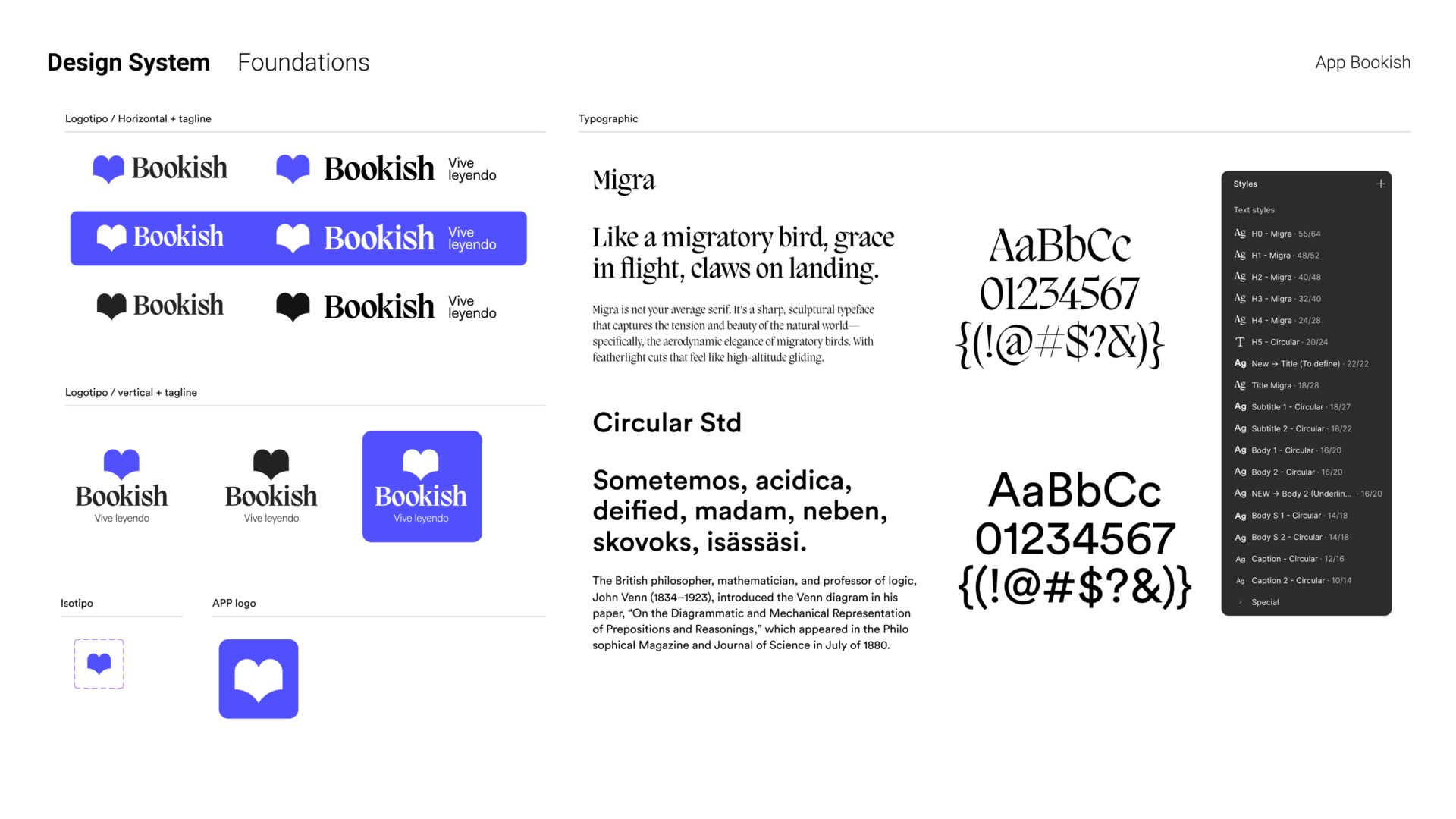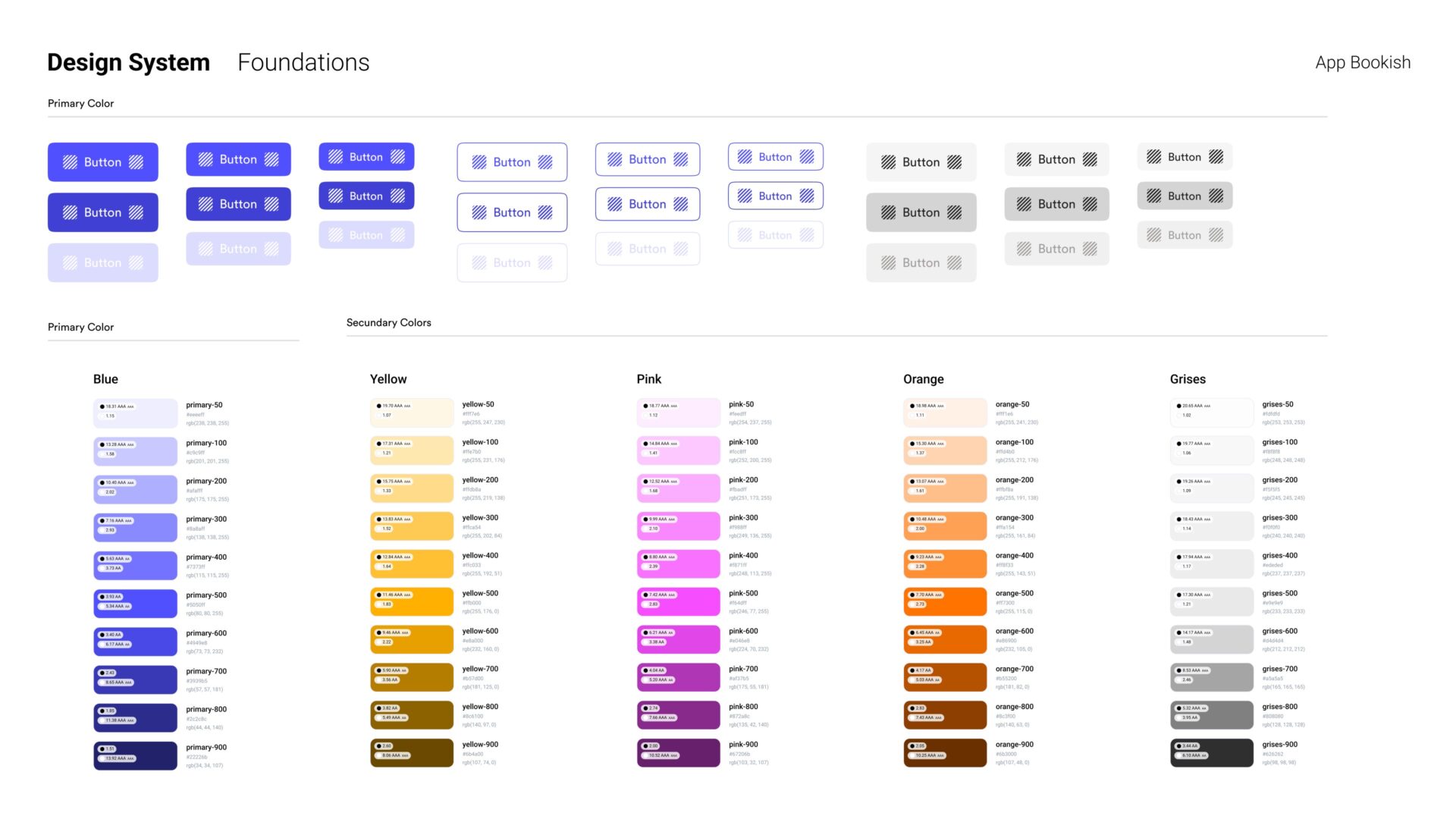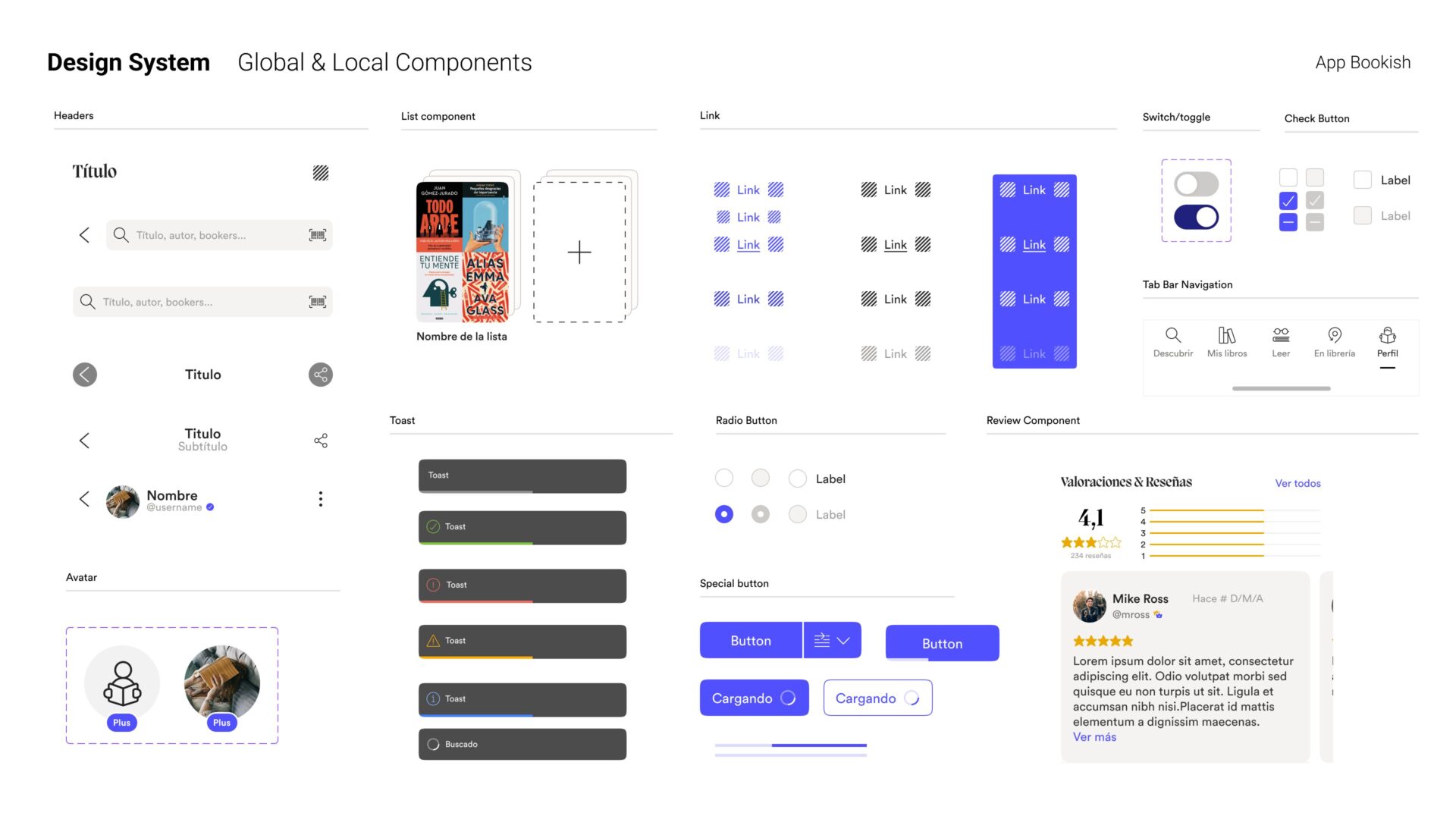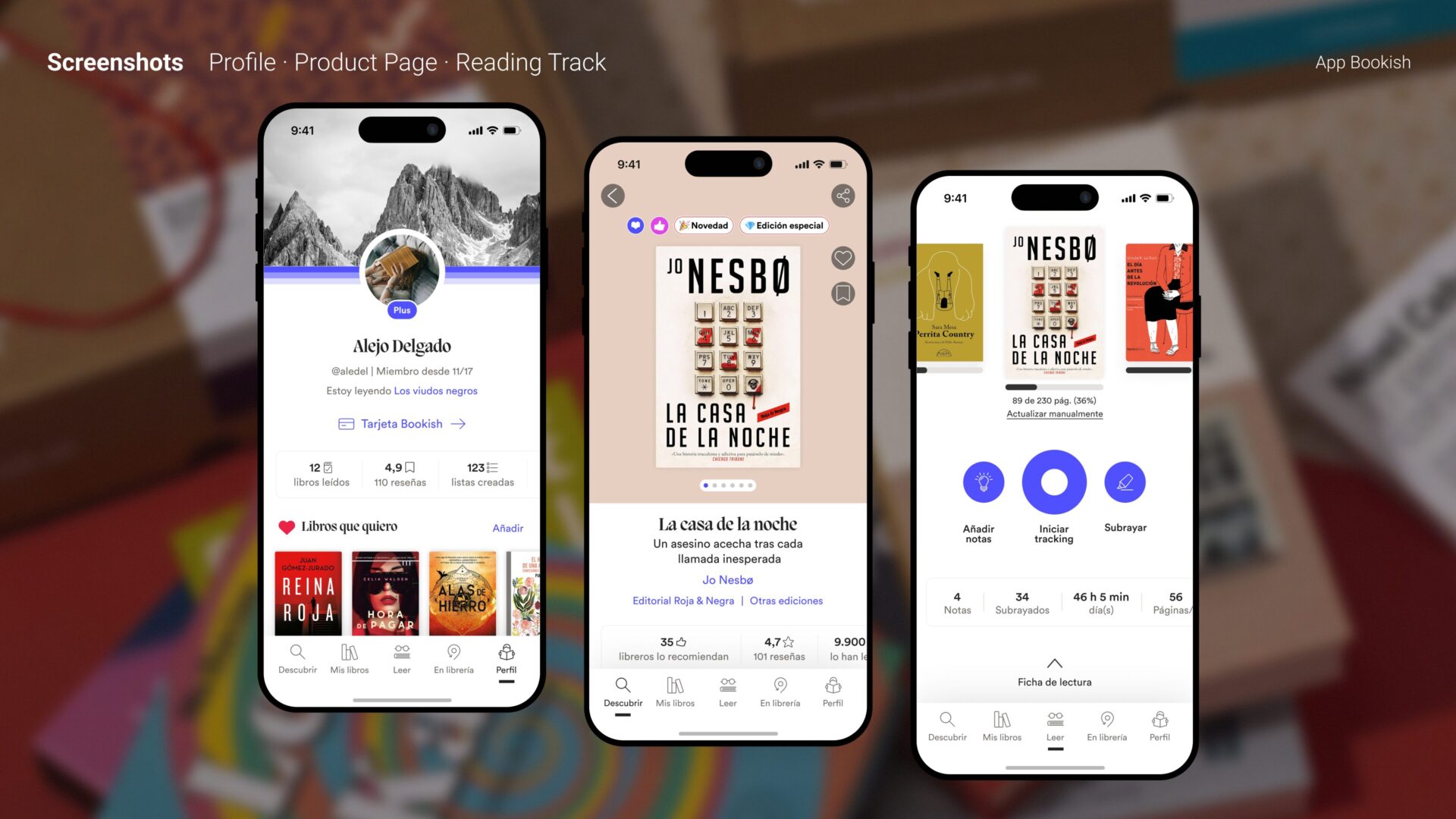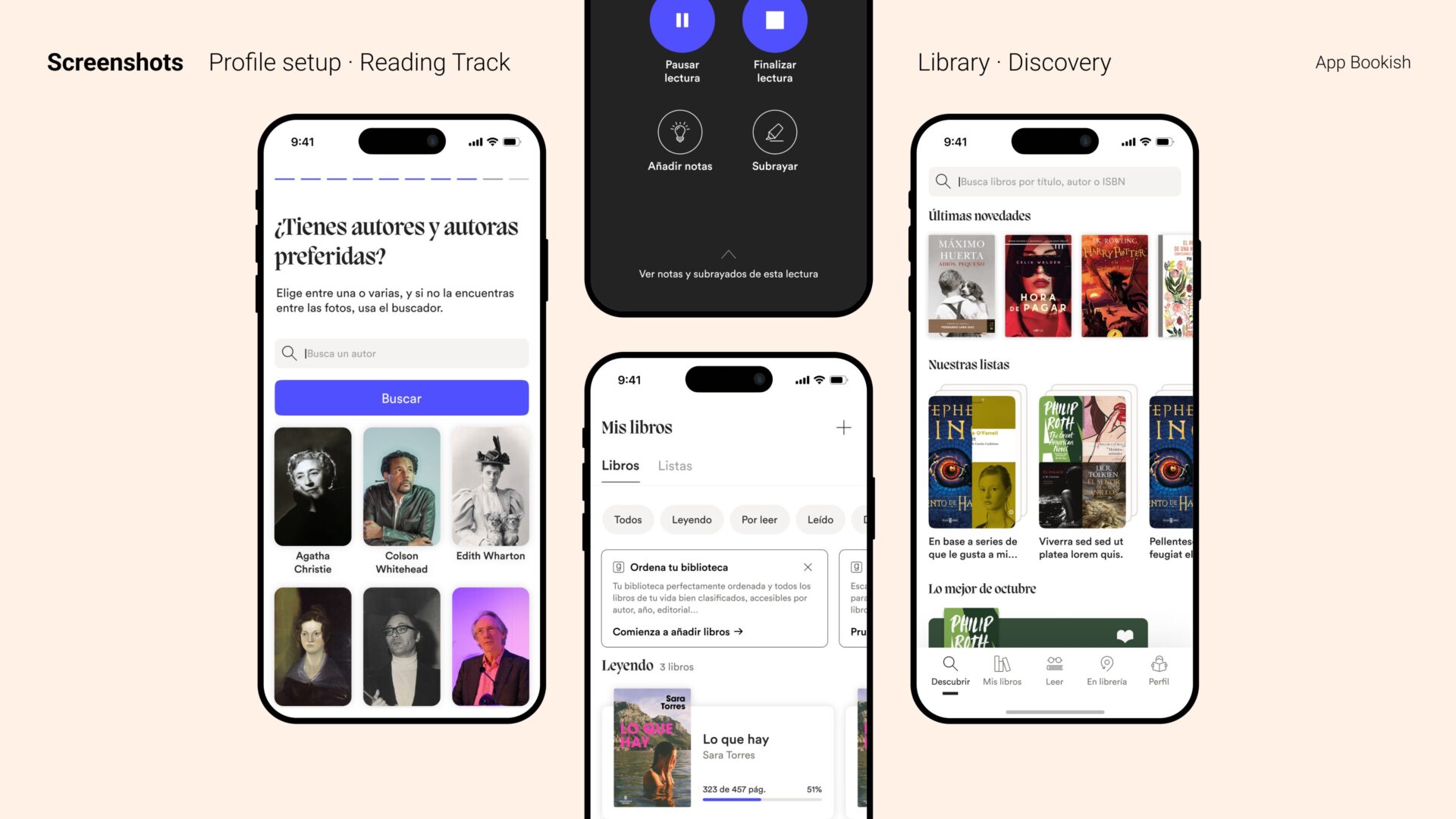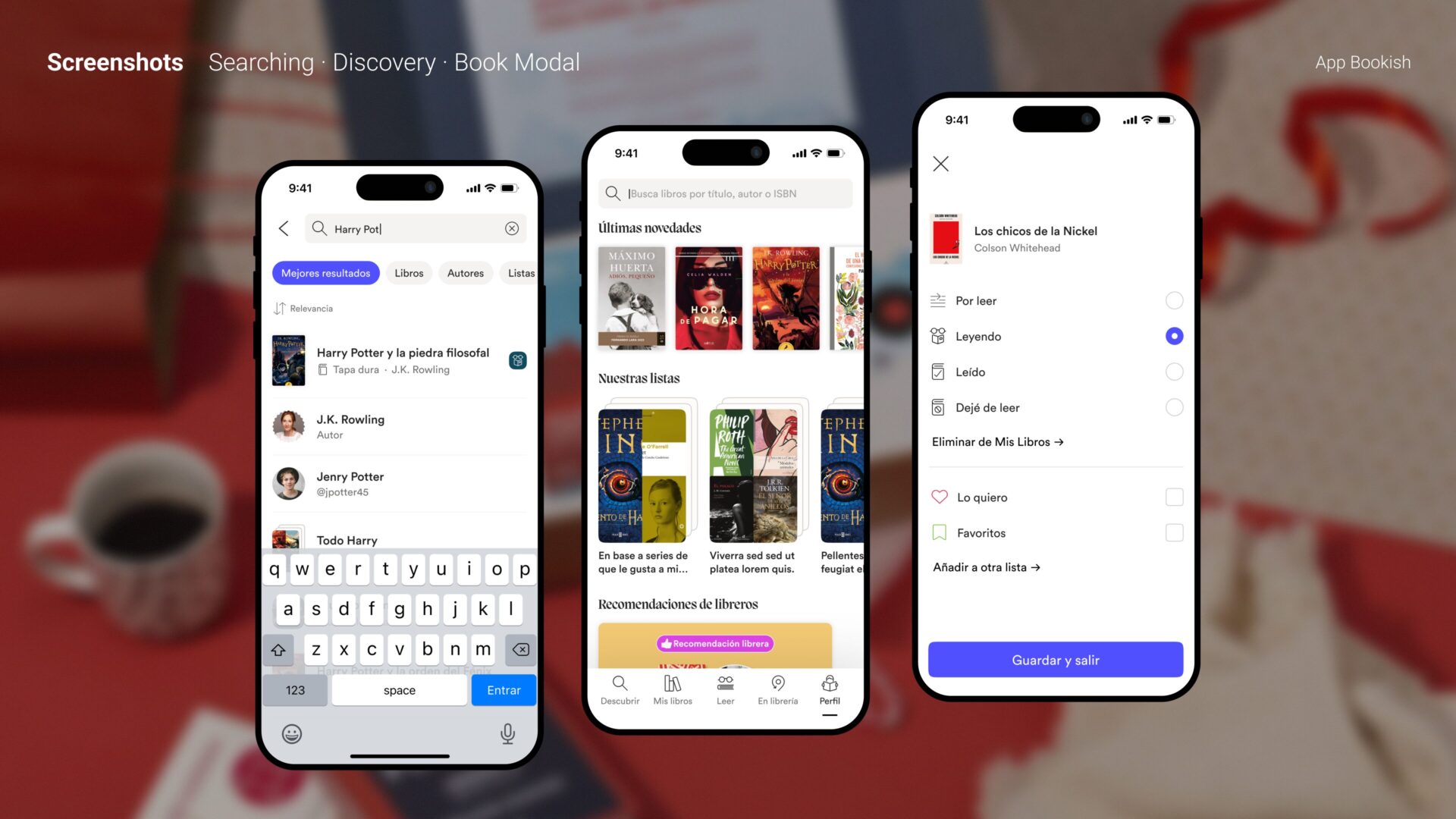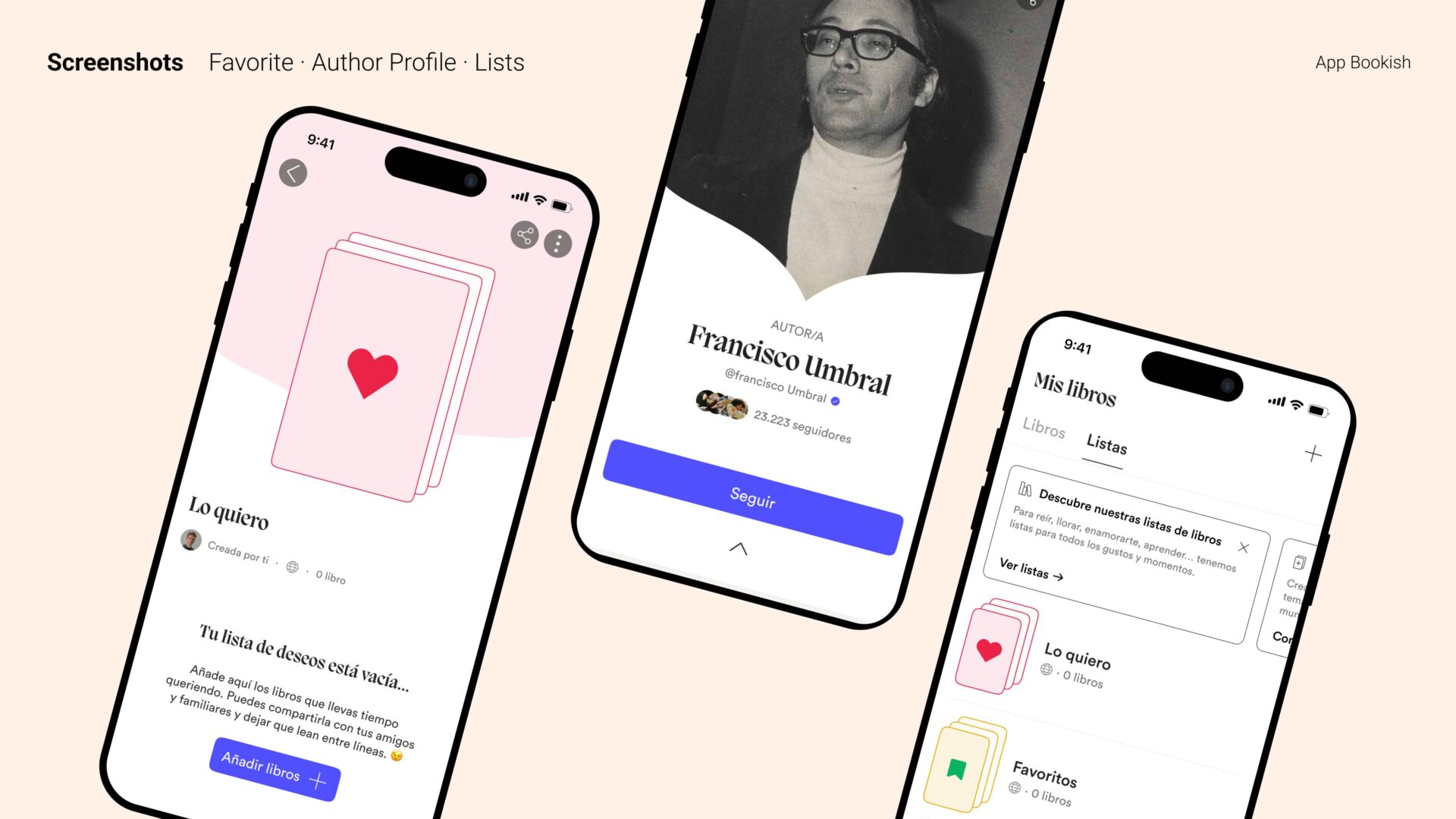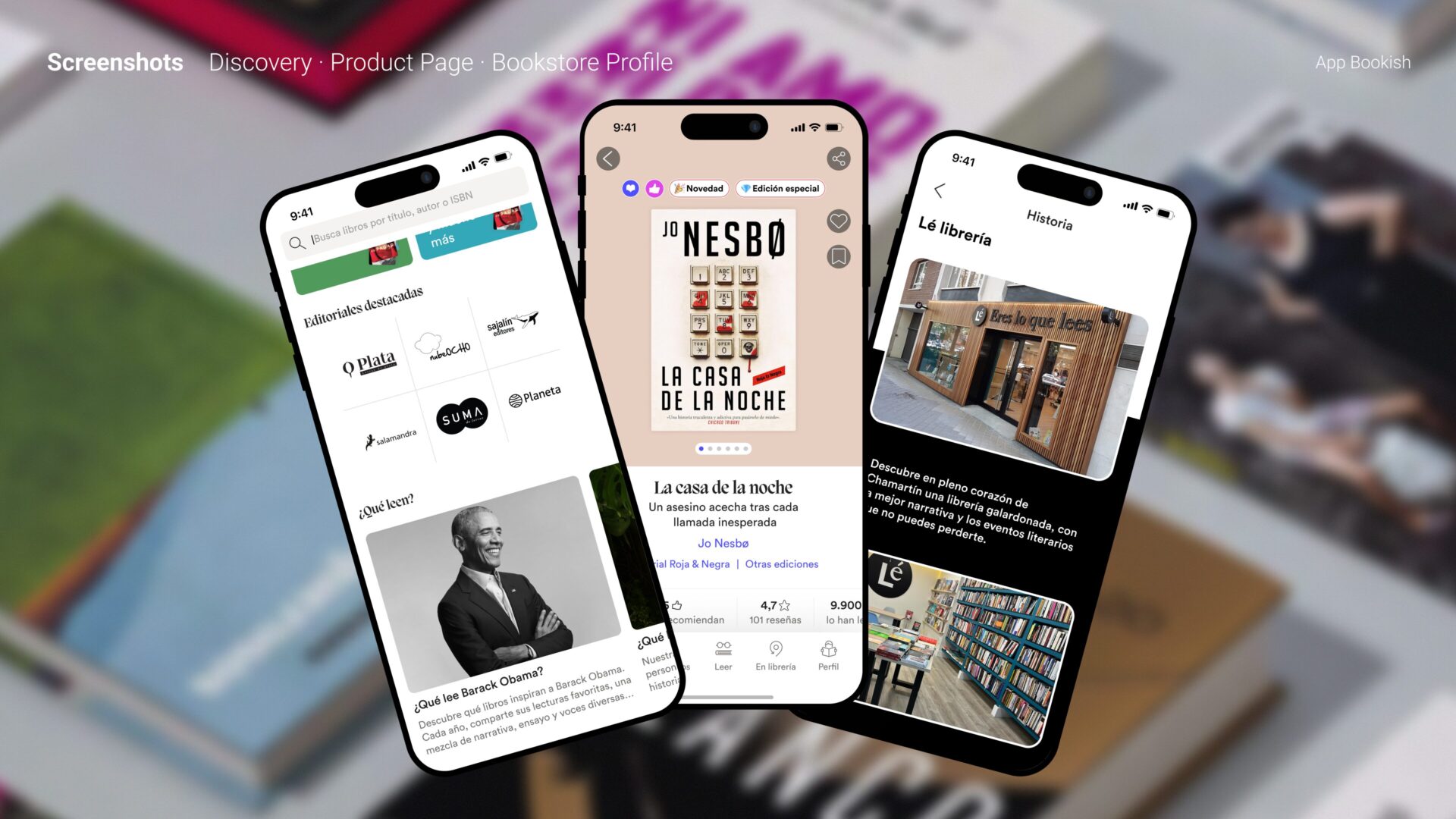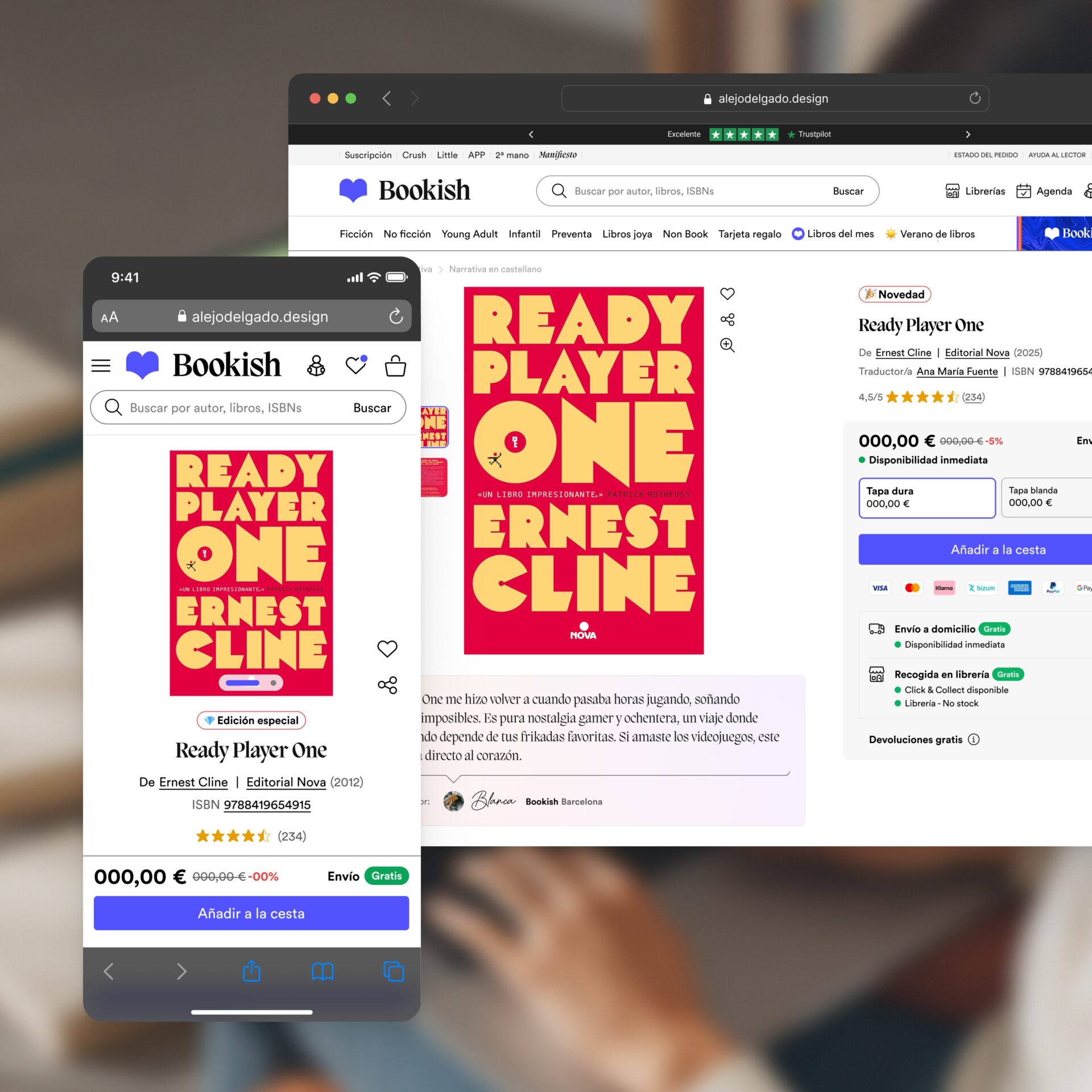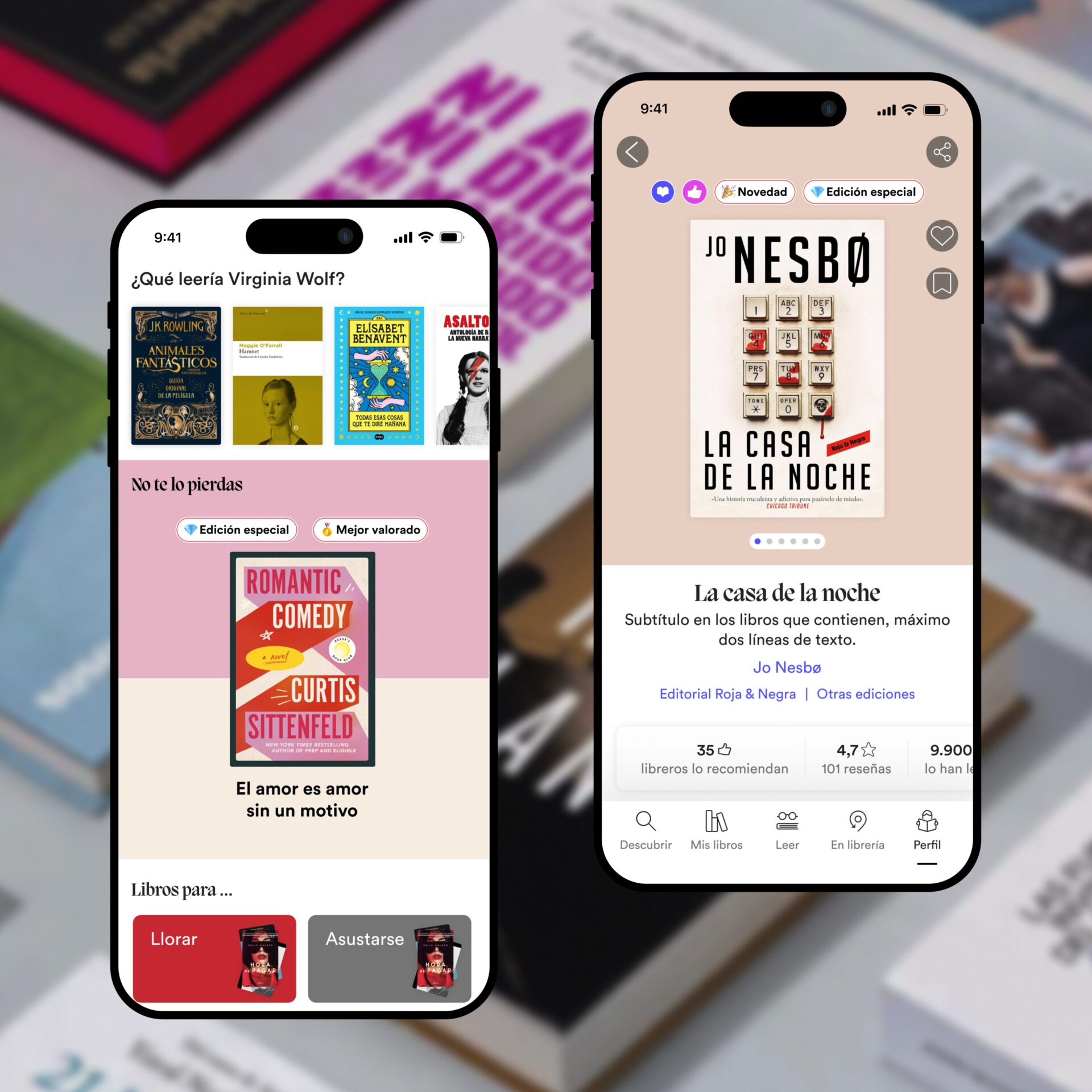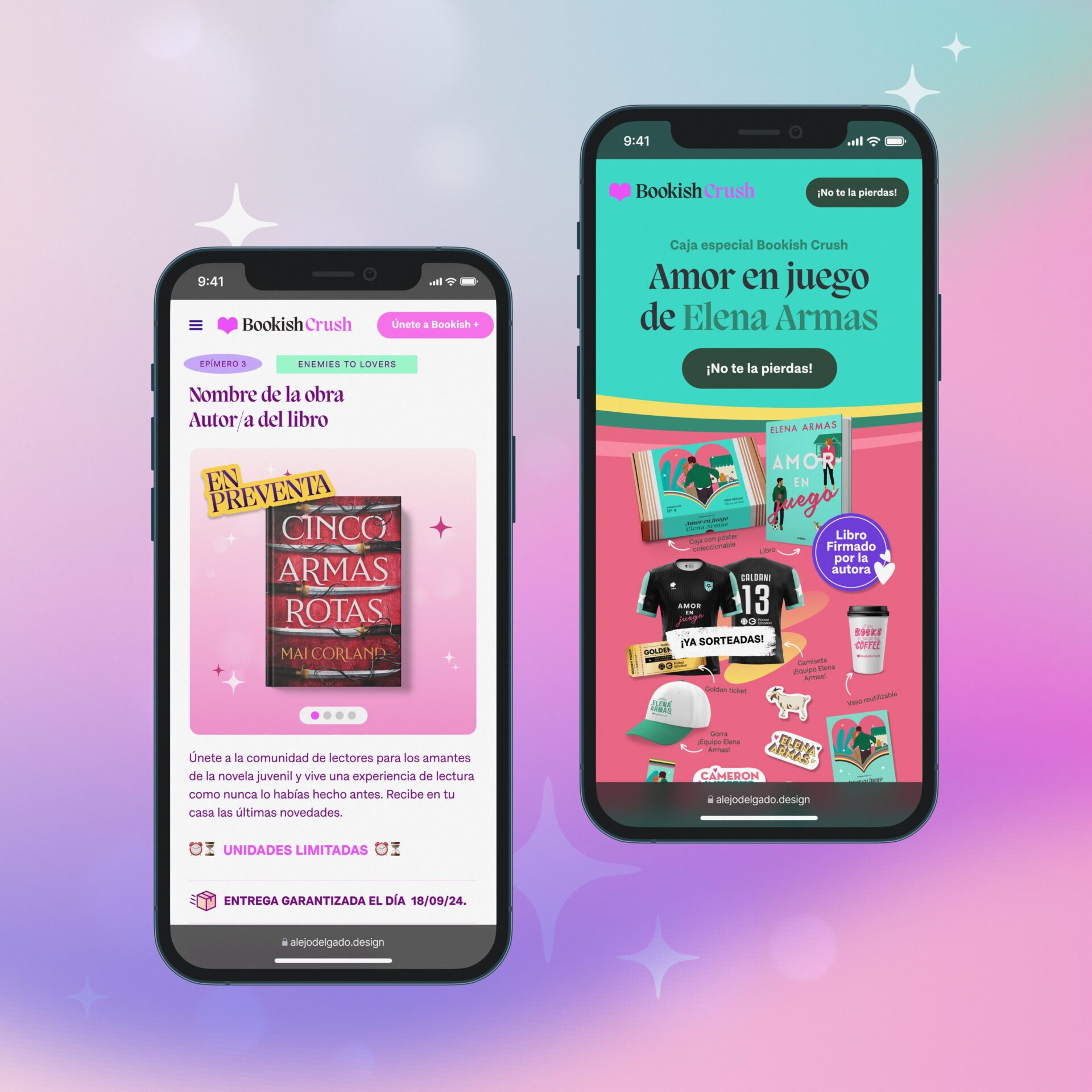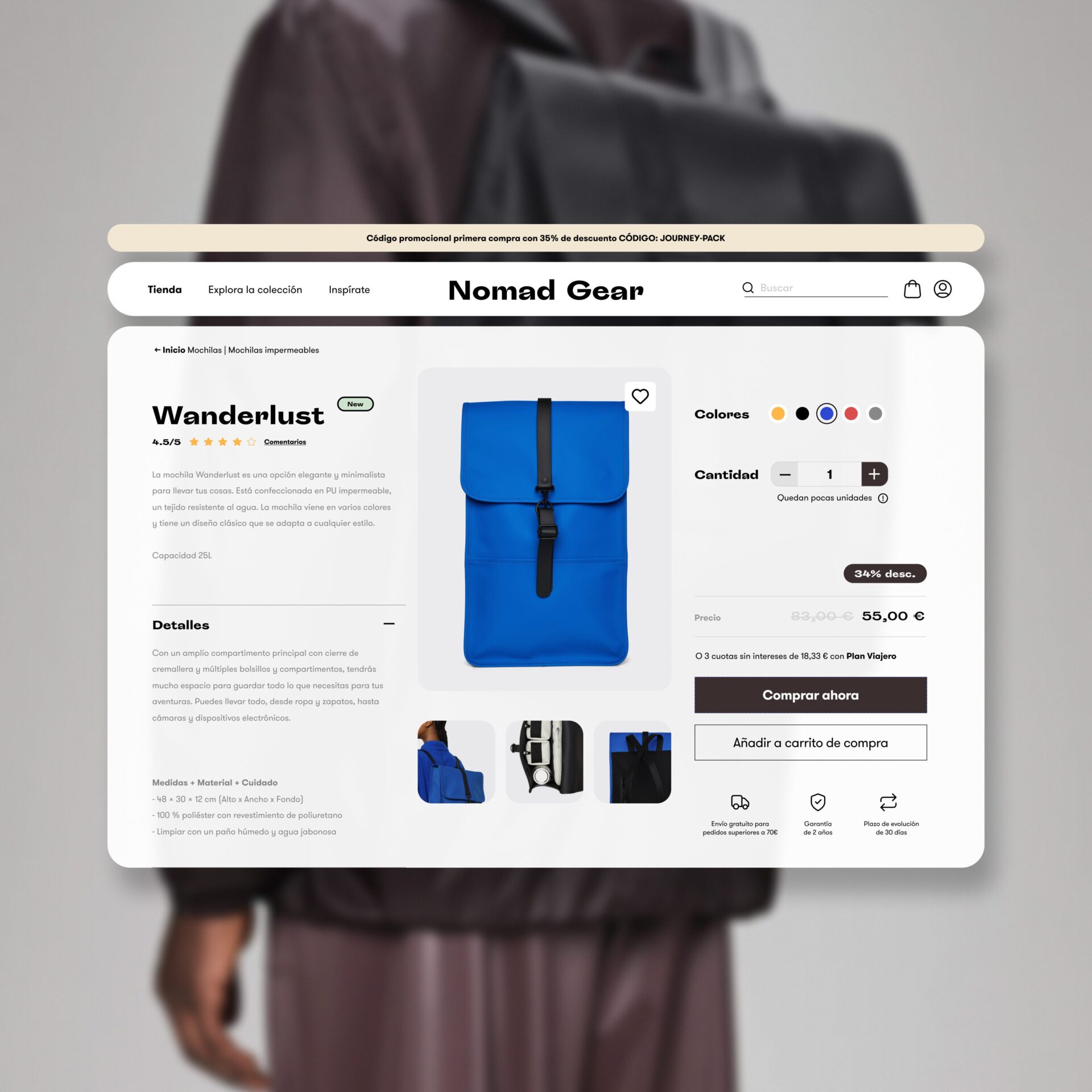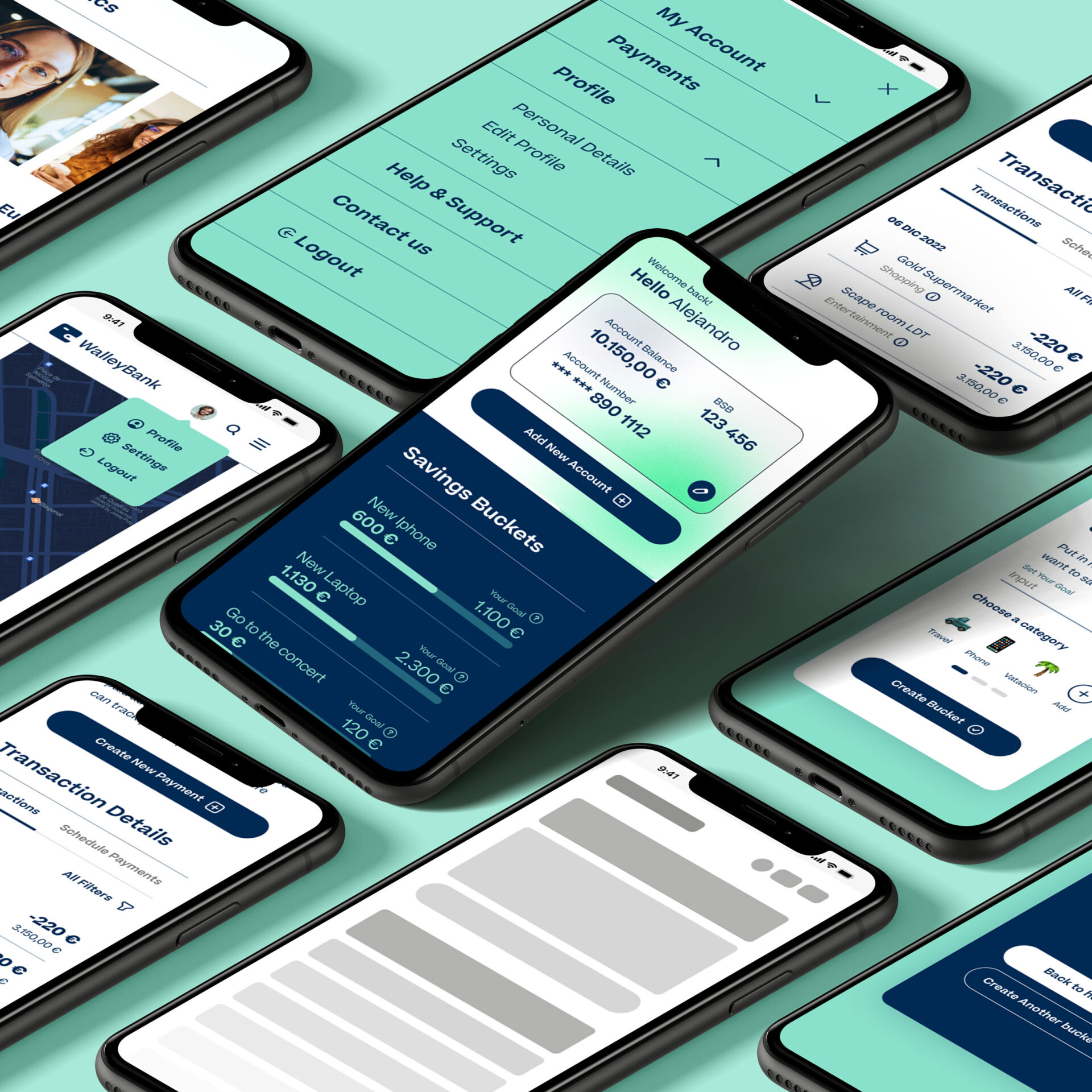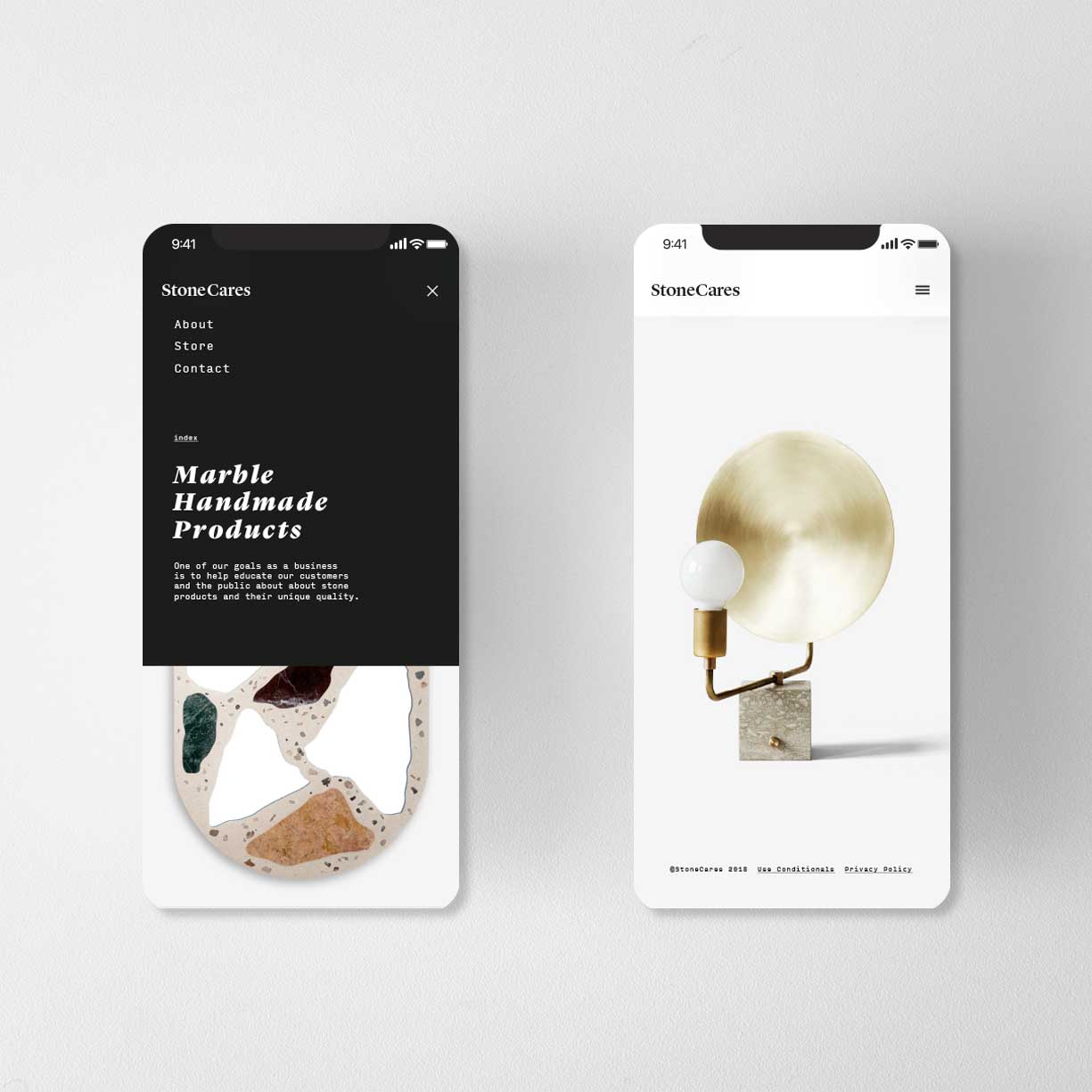App Bookish
ROLE: LEAD PRODUCT DESIGNER
PRODUCT: BOOKISH APP (IOS & ANDROID)
SUMMARY
The Bookish app extends the reading experience beyond the physical format. It lets you discover new reads recommended by experts, organize your digital library (books read, currently reading, to-read, or abandoned), share ratings with the community, make purchases, track your reading progress, and discover partner brick-and-mortar bookstores.
THE CHALLENGE
- Take over a project already started by another team and move it forward quickly.
- Analyze and assess existing screens, flows, and features to iterate on an existing foundation.
- Understand the inherited design system, propose improvements, and adapt it to new requirements.
- Improve the user experience in key flows: walkthrough, personal library, book editing, physical bookstore discovery, and in-app purchase experience.
- Design a content strategy to increase conversion and engagement.
- Balance priorities between business goals, user needs, and technical constraints.
RESPONSIBILITIES
- Lead product design: defining flows, functional structure, and visual experience.
- Make strategic decisions based on weekly data, A/B tests, and qualitative feedback.
- Design and iterate key product screens, prioritizing usability and visual consistency.
- Coordinate handoff with the development team (front-end, QA, and developers).
- Maintain and evolve the design system, ensuring scalability and consistency.
- Collaborate with marketing, tech, and customer service stakeholders to align objectives.
- Facilitate internal workshops to align product vision, roadmaps, and priorities.
- Prototype complex features to validate hypotheses before implementation.
IMPACT
- Increase from 4% to 8% in purchases made through the app after redesigning the purchase flow.
- Improved engagement thanks to the optimization of flows such as price scanning and walkthrough, with a 10% to 12% increase in daily usage.
- Reduced friction in the personal library editing process, improving session duration and the number of completed actions per session.
- Standardization of design patterns and documentation, which increased development speed and reduced implementation errors.
KEY LEARNINGS
- Designing specific features for apps requires understanding their technical limitations and the native patterns of each operating system.
- Good product design starts with a balance between business vision, active listening to the user, and close collaboration with development.
- Defining a rigorous data analysis process (both quantitative and qualitative) allows for informed decision-making and helps avoid unnecessary implementations.
- Prioritizing what not to design is just as important: understanding the real impact of new features before investing resources in their development.
- Reevaluating inherited ideas requires sensitivity and judgment: not everything from the past is wrong, but everything must be justified.

